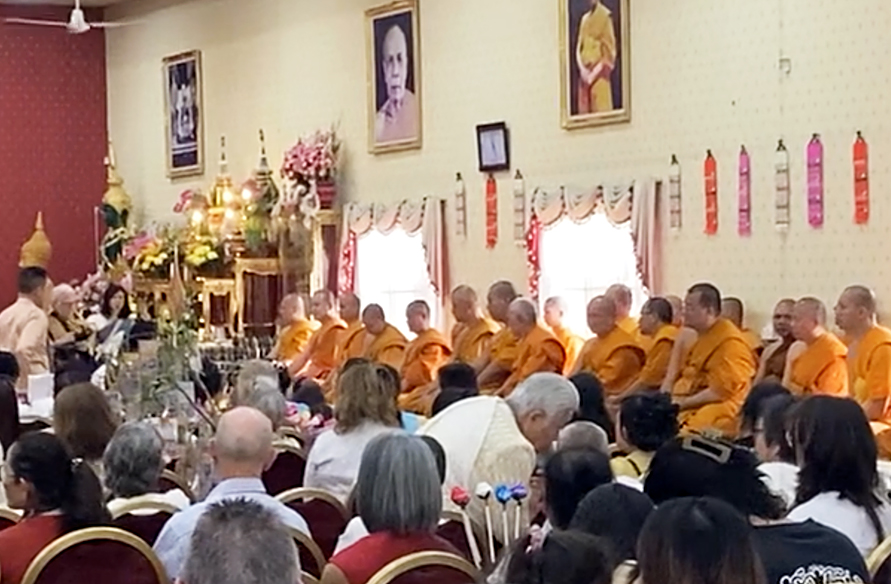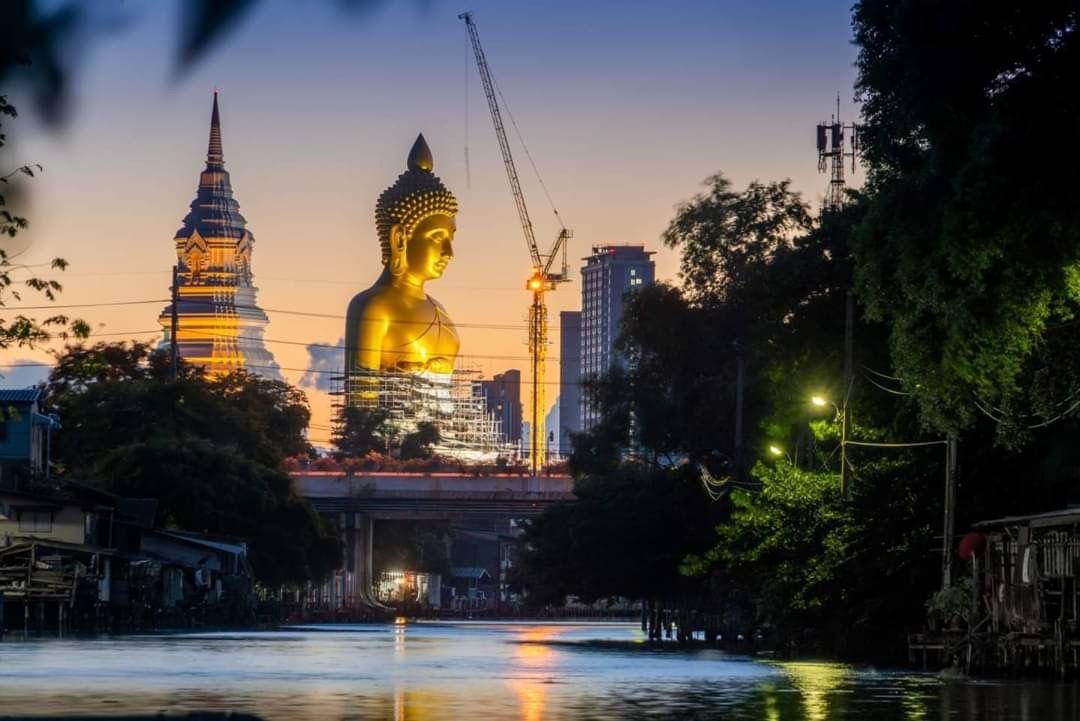Venerable Chonlatish Chanhorm
The abbot of a Thai Buddhist temple and monastery located in Brisbane's southern outskirts, Ven. Chonlatish discusses his work, the tradition of monkhood, the development of the temple, and plans for the future.
By Patrick Jory
This is a 4 minute read, and a 20 minute video, published in June 2024.
Wat Thai Buddharam (‘Buddha’s Grove Temple’) is a Theravada Buddhist monastery and temple in the Thai tradition located in Forestdale, a suburb of Logan City in southeast Queensland. The Venerable Chonlatish Chanhorm has been abbot of the temple since 2007. He is also Vice President of the Queensland Sangha Association Inc. and Secretary of the Union of Thai Sanghas in Oceania.
In this interview Venerable Chonlatish discusses the founding and growth of Wat Thai Buddharam, the services it offers to the community, the similarities and differences between managing a Buddhist temple in Thailand and in Brisbane, and the place of Buddhism in Queensland today.
Theravada Buddhism in Australia
The Theravada Buddhist tradition to which the Ven. Chonlatish belongs is the dominant variety of Buddhism in Sri Lanka and the four Southeast Asian nations of Myanmar, Thailand, Cambodia, and Laos.
Theravada Buddhism in Queensland began to expand in the 1980s, largely as a result of migration of Buddhists to Queensland, as well as government support for multicultural policies. Today there are ten Theravada Buddhist temples located in Brisbane, the Gold Coast, and the Sunshine Coast, serving the Sri Lankan, Thai, Cambodian, Lao, and Myanma communities, as well as others interested in the Theravada Buddhist tradition.
Approximately 15,000 Thais currently reside in Queensland, as well as about 3500 Thai students (Australian Bureau of Statistics, 2023; Department of Education, 2023), making it the largest of the Southeast Asian Theravada Buddhist communities. In Brisbane, the Gold Coast, and the Sunshine Coast there are four temples that cater specifically to the Thai community; on occasion, Thais will also attend other Theravada Buddhist temples.
‘Making merit’ and the festival calendar
The typical religious activity for Theravada Buddhists is to ‘make merit’. Merit-making is based on a belief that if one does good deeds in this lifetime, one will be reborn into a better station in life in a future incarnation. Merit-making often takes place on one of the four Buddhist ‘holy days’ each month, which coincide with different phases of the lunar cycle. There are many ways of making merit. The most common activity is to give food to the monks every day. One may also present monastic robes to the temple, or make a donation to help with the expenses of running the temple, or even become a monk for a short time. An important form of merit-making concerns family members who have passed away. Monks perform ceremonies to help families make merit for the deceased to ensure they have a good rebirth.
Major merit-making festivals in the Theravada Buddhist calendar include Magha Puja, in February or March, which commemorates the Buddha’s teaching of monastic rules (contained within the Pali text known as the Patimokkha); the Buddhist New Year in mid-April; the Visakha (or ‘Vesak’) festival, usually held in May, which commemorates the birth, enlightenment, and the passing away or parinibbana of the Buddha; the commencement of the Rains Retreat, from July to September, when monks are confined to their temples; and the Kathina Robe-Offering Ceremony, which usually takes place in October or November.
if one does good deeds in this lifetime, one will be reborn into a better station in life in a future incarnation
Sources and further reading
Australian Bureau of Statistics. 2023. ‘Australia’s Population by Country of Birth [2022].’ https://www.abs.gov.au/statistics/people/population/australias-population-country-birth/latest-release.
Australian Government, Department of Education. 2023. ‘International student numbers by country, by state and territory [2023].’ territoryhttps://www.education.gov.au/international-education-data-and-research/international-student-numbers-country-state-and-territory
Related articles



